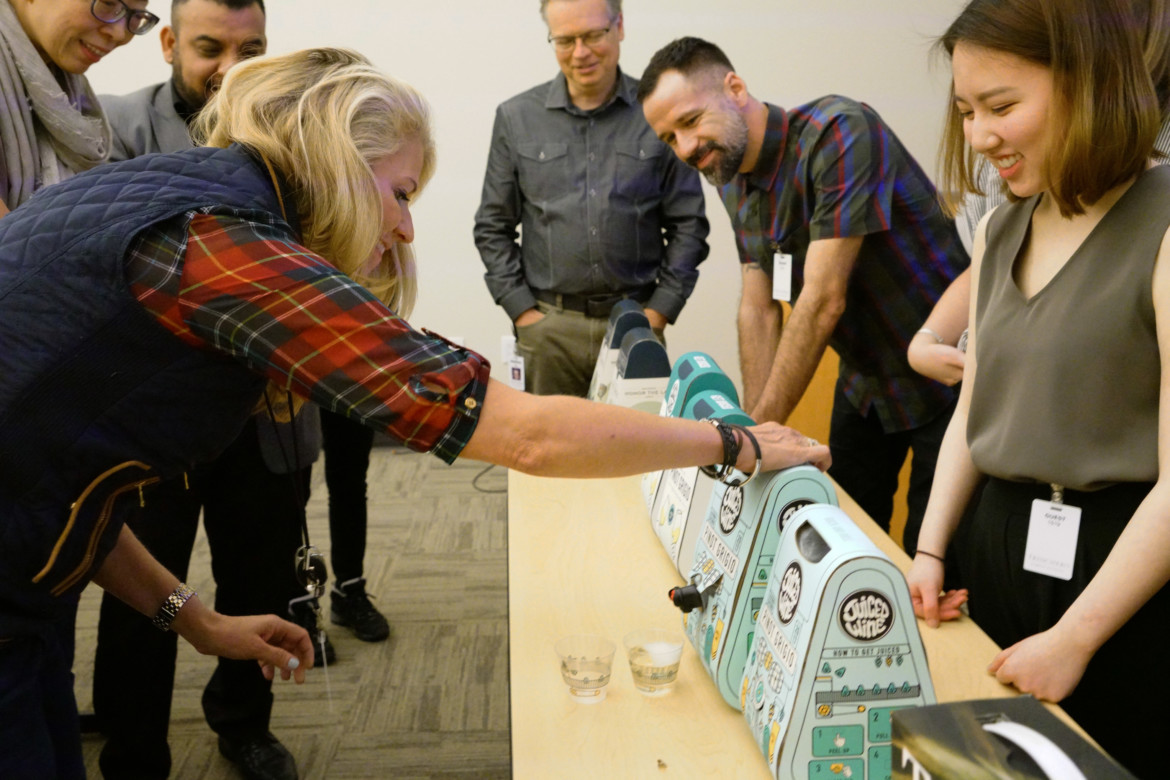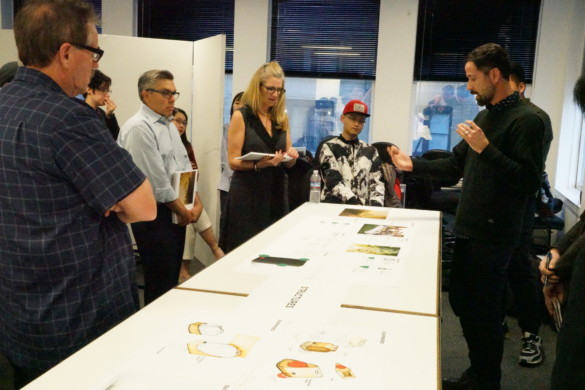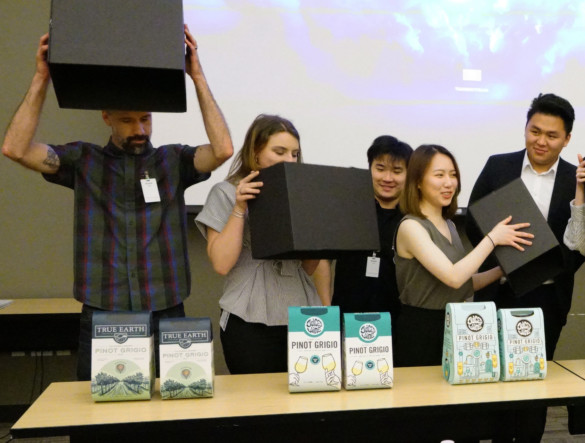Students from the Schools of Graphic Design and Industrial Design team up to create an innovative prototype for True Earth, the legendary winemaker’s first foray into boxed wine
By Kyle Roe
Students enrolled in Package Design 3 (GR 370) had the chance to partner with Trinchero Family Estate Winery, a world-famous winemaking company responsible for the invention of white zinfandel and distribution of Sutter Home wines. The Academy of Art University students involved were commissioned to design an elegant and practical package structure for Trinchero’s new boxed wine.
The students were divided into three teams with the goal to compete for the winning design. Each team consisted of four students from the School of Graphic Design (GR) and one from the School of Industrial Design (IND). The interdepartmental pairings added another layer of collaboration to the project, and allowed for a more complex and realistic product design.
“Some of the time when you get into more complex packaging, more ornate forms, or things that behave in more sophisticated ways, there’s a need to involve the industrial designers, because that’s their purview,” explained GR Director Phil Hamlett. “They’re able to work with complicated three-dimensional shapes. The designers might benefit from an assist there.”
Fittingly, the focus of the class “was more on innovation,” according to Wendy Nyberg, Trinchero’s vice president of marketing. “Finding a solution to a problem. This was looking at the three-liter box category, which has had no innovation in years.” Most of the problems were related to the structural design of the boxed wine and were very common throughout the industry.
According to Tom McNulty, GR associate undergraduate director and the class’ instructor, “We began the assignment much like working with a client and agency setting. Each team was given a design brief, along with a presentation, and a tour of the facilities in the Napa Valley. This enabled our students to better understand not only the winemaking business but, how wine is packaged and sold as we know it today. The boxed wine business is fast growing and very competitive, so our students had to find the right balance between design appeal, functionality and the packaging structure in order to achieve a successful outcome.
“Each team set out to present several comprehensive design concepts to explore the benefits including, but not limited to: the package ergonomics and handling features, an insulated bag or box that keeps wine cold longer outside the refrigerator. Applied graphics that changes color (thermosensitive inks) that let you know when the wine is the perfect temperature to enjoy—or needs to chill again. An integrated set of recyclable paper cups included in, or attached to, the box so that you’re always ready to enjoy on the go. Lastly, a ‘wine on tap’ approach that is easy to use and dispense wine.”
“This was Trinchero’s first attempt [at] breaking into the boxed wine industry and so the challenge was to come up with a design that would give them an edge over their competitors,” explained Adrian Raj, team leader of Group C. “Existing boxed wine packaging was extremely basic, and all of them used the same box structures and [function]. The only thing that varied was the graphics on the box.”
Most, if not all, of the students had never designed a wine label before, so there was a learning curve at the start of the project. “It was quite hard at first,” Kelly Lo, the industrial designer for Group C, reflected. “There were a lot of terms and processes that were different then working on [an] industrial design project. However, Tom was very professional and patient when we were discussing [the project] with him. He was very helpful and he gave us a lot of useful information.”
The idea of recyclable cups also worked toward one of Trinchero’s key guidelines for the students: reduction of environmental impact. “It’s recyclable and safe for the environment,” said Ligang “Jesse” Yu, the industrial designer for Group B. “We can’t use much plastic.”
Yu added an innovative idea of his own to his box’s design, in the form of a reusable base for the product. In his structural design, “there are two parts: the bottom base and the top. The top is [filled with] wine, so you lock it to the base, and it works. When the top part’s liquid runs out, you buy another one to attach to the base.” The idea is meant to appeal to Trinchero’s sustainability goals.

A student showcases his team’s proposed prototype. Photo by Bob Toy.
Raj’s group tackled the problem of the “wine on tap approach” using a “push-down nozzle mechanism (like a shampoo bottle) that sat flush at the top of the box. All one has to do is pull up the nozzle and push it down to get one glass of wine. We came up with this design keeping in mind certain things such as shelf space, shipping, and functionality [was critical].” The tap itself was designed by Kelly Lo, who wants to pursue a career in toy design after the Academy. “Packaging is also very important for toys,” she said.
In the end, the True Earth concept designed by Ashley Frohkling’s team was chosen for production by Trinchero Family Estates. According to Frohkling, the group’s success was a result of hard work, design savvy, and collaborative team effort.
“I have to say that it was a great team dynamic,” Frohkling expressed. “My entire team was supportive, we all communicated. Everyone pulled their weight on my team, for sure.”


